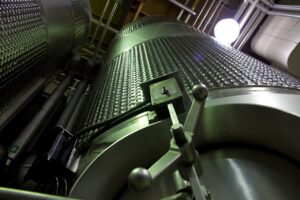
Drone technology has transformed several sectors recently, including law enforcement. These uncrewed aerial vehicles (UAVs), which support police officers’ efforts to uphold public safety and execute the law, have grown to be indispensable instruments for police departments worldwide. Drones used by Police have changed the game thanks to their capacity to reach difficult-to-reach places, offer real-time situational awareness, and improve overall operating efficiency.
This post will look at five key ways that drone technology is supporting law enforcement organizations in their efforts to safeguard communities.
Enhanced Surveillance and Reconnaissance
High-resolution cameras and thermal imaging capabilities aboard drones have greatly enhanced law enforcement’s surveillance and reconnaissance capabilities. These aerial gadgets may be used to keep an eye on crime scenes, crowds, and high-risk regions, giving cops vital real-time information. With the capacity to record live video feeds, police enforcement can analyze conditions rapidly, spot possible threats, and act appropriately. Police drones help law enforcement organizations better manage their resources and maintain public safety by augmenting conventional ground-based surveillance techniques.
Search and Rescue Operations
Search and rescue operations are one of the most important uses of drone technology in law enforcement. Drones using thermal imaging cameras and GPS tracking devices can swiftly scan large regions, aiding in the recovery of stranded or missing people. Drones can access locations that are difficult or hazardous for people to access in rough terrain or during natural catastrophes. These drones support search teams by giving real-time pictures and aiding in the prompt recovery of missing people thanks to their aerial viewpoint and cutting-edge photography capabilities.
Saving Lives from Above
Drones are real lifesavers during search and rescue missions. These drones can quickly cover enormous regions thanks to their flying capabilities and sophisticated image systems, greatly improving the likelihood of finding missing people or those in danger. Their thermal imaging cameras can see people in far-off or difficult-to-reach places because they can detect heat signatures. By providing a swift response and a perspective from above like a bird’s eye view, drones play an essential part in the process of saving lives.
Traffic Monitoring and Accident Reconstruction
Drones have become valuable assets in traffic monitoring and accident reconstruction. Law enforcement organizations can more efficiently spot traffic offenses and enforce traffic laws by using drones to collect aerial pictures of congested traffic. Drones may also swiftly capture the accident scene in the case of an accident, giving precise visual data that aids in reconstructing the course of events. This makes the procedures for filing insurance claims more efficient and provides investigators with assistance in determining the cause of events.
Crowd Control and Public Event Security
Maintaining public order during large-scale events or protests is a complex task for law enforcement agencies. Law enforcement officials may use drones with loudspeakers and cameras as an extra tool to control crowds and maintain public safety. These drones can broadcast messages, send out alerts, and record videos of any unauthorized activity or disruption. By providing commanders on the ground with real-time situational awareness, police drones contribute to the reduction of risks and the prevention of potential conflicts.
Evidence Collection and Forensic Investigation
The use of drones has revolutionized evidence collection and forensic investigation processes. Drones with high-resolution cameras may take in-depth pictures and videos of crime scenes, helping detectives preserve the scene without disturbing the evidence. With the use of this technology, law enforcement organizations may collect essential data from different perspectives and heights, aiding in the precise reconstruction of crime scenes. Drones can also be fitted with specialist sensors, such as multispectral or ultraviolet cameras, to find evidence that isn’t apparent to the naked eye.
Conclusion
For law enforcement organizations throughout the world, drone technology has become a potent weapon that offers improved surveillance, faster reaction times, and the protection of both police and the general public. Law enforcement organizations may get beyond geographical restrictions, obtain real-time intelligence, and carry out their tasks more effectively by utilizing the capabilities of drones. Drones will likely become increasingly more important in law enforcement as technology develops, supporting police in serving and protecting their communities. Law enforcement organizations are better prepared to handle the changing challenges of the modern world by adopting these cutting-edge technologies, making our communities safer and more secure.


